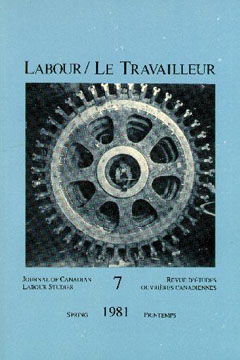Abstract
BETWEEN 1891 AND 1951, women constituted a large proportion of the workforce in the Quebec cotton industry. Using life cycle analysis as a principal investigative tool, the author explores their work experience in this industry. By the 1940s a transition was occurring from a two-stage life cycle (gainful employment before marriage, permanent withdrawal from the work-force after marriage) to a three-stage life cycle (employment before marriage, temporary withdrawal after marriage for child rearing, and a subsequent return to work. Concurrently, female workers were entering the mills later and leaving them earlier to marry than had their predecessors. This trend, coinciding with a significant shift of the female work-force within the industry from skilled to unskilled labour, tended to reduce the female cotton worker's militancy.
DE 1891 A 1951, les femmes formaient une forte proportion des travailleurs dans l'industrie du coton au Québec. En analysant les cycles de la vie de ces ouvrières, l'auteur essaie d'évaluer leur expérience industrielle. Déjà pendant les années 1940, il y avait eu la transition d'un cycle de deux étapes (emploi à gages avant le mariage, désistement complet de travail hors de la maison après le mariage) à un cycle de trois étapes (emploi à gages avant le mariage, désistement temporaire après le mariage pour élever les enfants, retour plus tard au travail). En même temps, les ouvrières se mirent à travailler plus tard qu'auparavant et elles quittèrent leur emploi plus tôt pour se marier. Cette tendance, accompagnée d'un changement progressif des tâches spécialisées aux tâches non-spécialisées dans la production des cotonnades, eut pour résultat une atténuation du militantisme des ouvrières.
